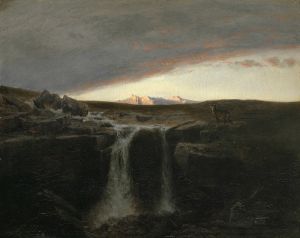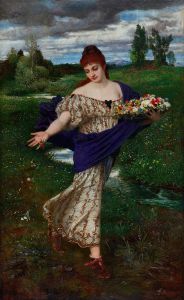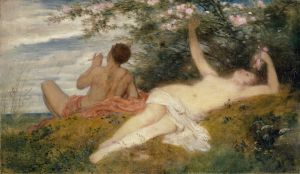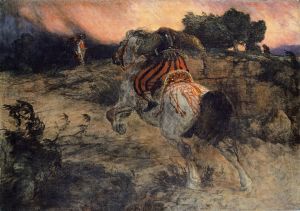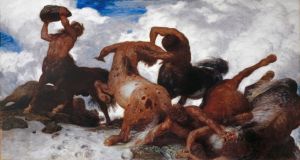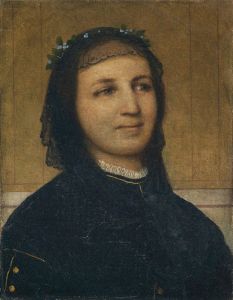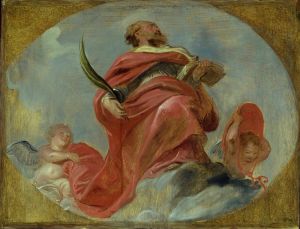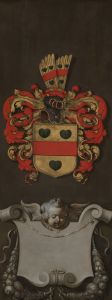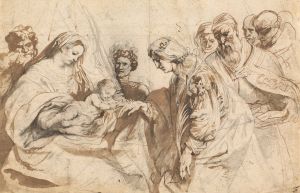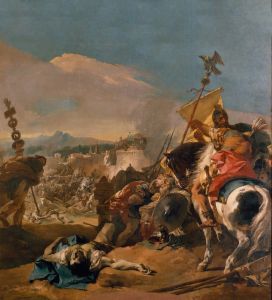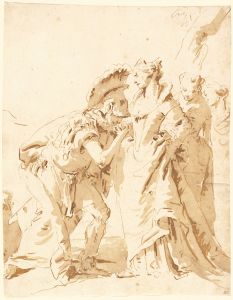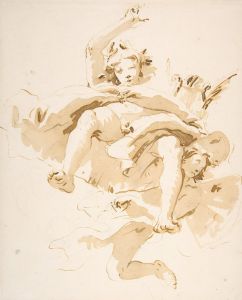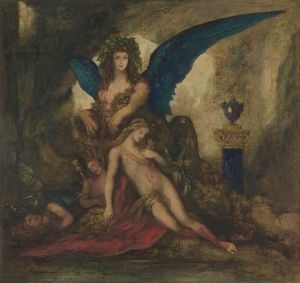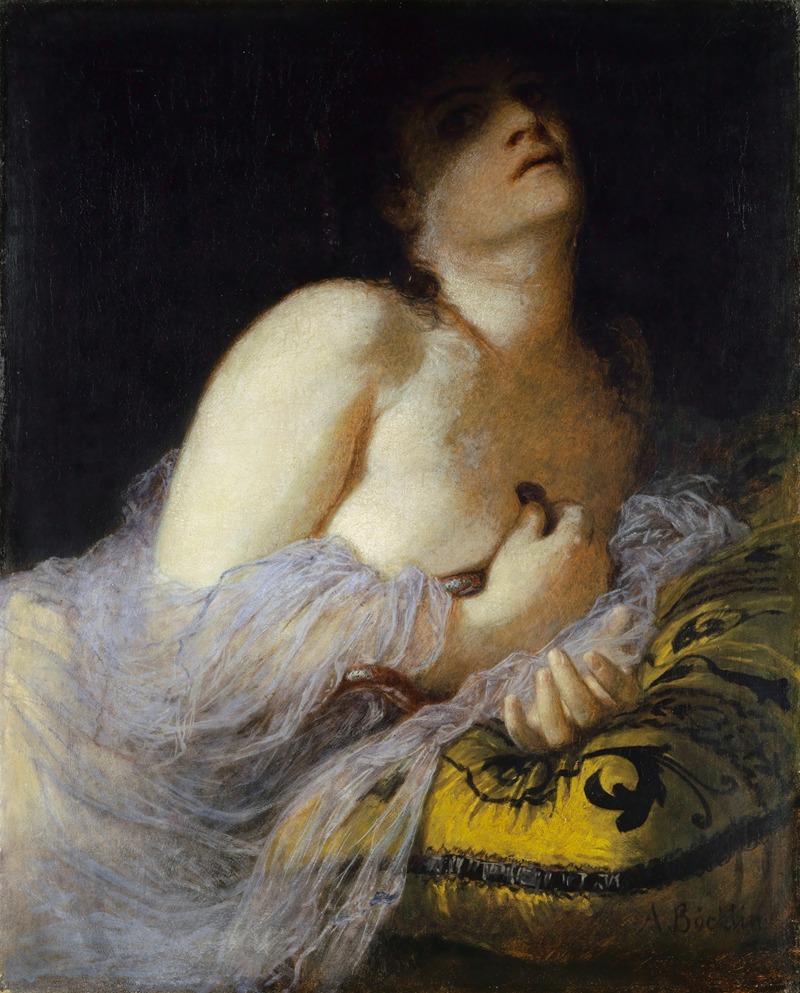
The Death of Cleopatra
A hand-painted replica of Arnold Böcklin’s masterpiece The Death of Cleopatra, meticulously crafted by professional artists to capture the true essence of the original. Each piece is created with museum-quality canvas and rare mineral pigments, carefully painted by experienced artists with delicate brushstrokes and rich, layered colors to perfectly recreate the texture of the original artwork. Unlike machine-printed reproductions, this hand-painted version brings the painting to life, infused with the artist’s emotions and skill in every stroke. Whether for personal collection or home decoration, it instantly elevates the artistic atmosphere of any space.
Arnold Böcklin's "The Death of Cleopatra" is a painting that reflects the artist's fascination with mythological and historical themes, a characteristic feature of his work. Böcklin, a Swiss symbolist painter, was known for his imaginative and often fantastical interpretations of classical subjects. Although specific details about this particular painting are limited, Böcklin's broader body of work provides context for understanding his approach to such themes.
Böcklin was born in 1827 in Basel, Switzerland, and he became one of the most prominent figures in the Symbolist movement. His works often explore themes of death, mythology, and the supernatural, frequently incorporating elements of the natural world. Böcklin's style is marked by a vivid use of color and a meticulous attention to detail, which he used to create dreamlike and sometimes eerie atmospheres.
"The Death of Cleopatra" likely draws upon the historical and legendary narratives surrounding Cleopatra VII, the last active ruler of the Ptolemaic Kingdom of Egypt. Cleopatra is a figure who has captivated artists, writers, and historians for centuries, known for her intelligence, political acumen, and her romantic liaisons with Roman leaders Julius Caesar and Mark Antony. Her death, traditionally believed to have been by suicide via an asp bite, has been a subject of intrigue and artistic representation throughout history.
In Böcklin's time, the 19th century, there was a renewed interest in classical antiquity and its figures, partly fueled by archaeological discoveries and the Romantic movement's fascination with the exotic and the dramatic. Artists like Böcklin were inspired to reinterpret these ancient stories through their own unique lenses, often imbuing them with contemporary sensibilities and symbolic meanings.
While specific details about the composition and style of "The Death of Cleopatra" by Böcklin are not extensively documented, it can be inferred that the painting would reflect his typical approach—melding historical narrative with symbolic and imaginative elements. Böcklin's works often feature a rich palette and a sense of movement and drama, characteristics that would be fitting for a depiction of Cleopatra's dramatic and storied end.
Böcklin's influence extended beyond his lifetime, impacting the Symbolist movement and later artists who admired his ability to blend reality with the fantastical. His works, including those on historical subjects like Cleopatra, continue to be studied for their unique approach to storytelling through art.
In summary, while specific information about "The Death of Cleopatra" by Arnold Böcklin is scarce, understanding his artistic style and thematic interests provides insight into how he might have approached this subject. His fascination with mythology, combined with his distinctive symbolic style, would have contributed to a compelling interpretation of Cleopatra's legendary demise.





